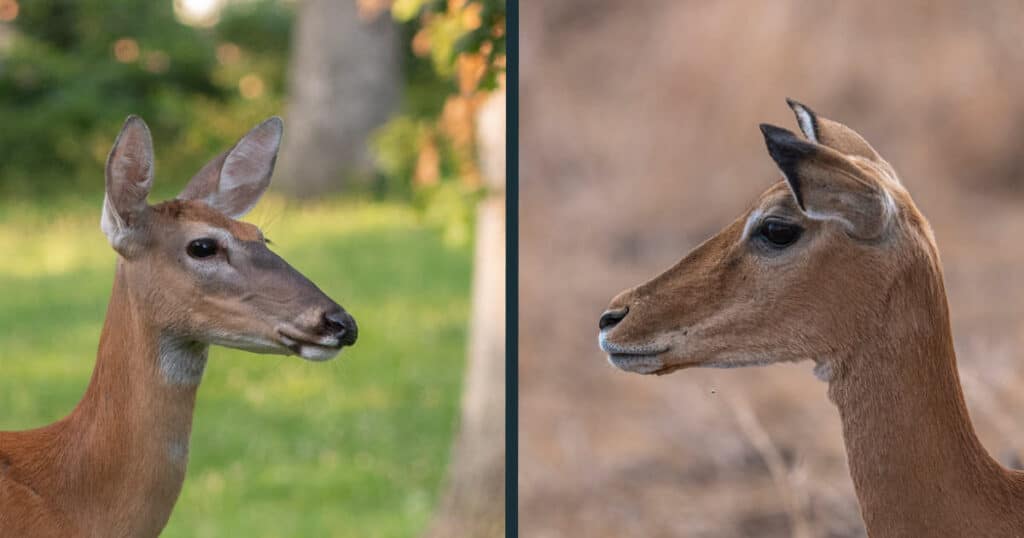Swift yet graceful, the gazelle is one of the fastest land animals in the world. Gazelles are known for their pronking or stotting behavior, where they leap off the ground using all four limbs simultaneously. According to researchers, gazelles stott to let predators know that they are ready to flee and escape. Let’s learn more about gazelle and the differences between these animals and the many deer of the world in this deer vs gazelle comparison.
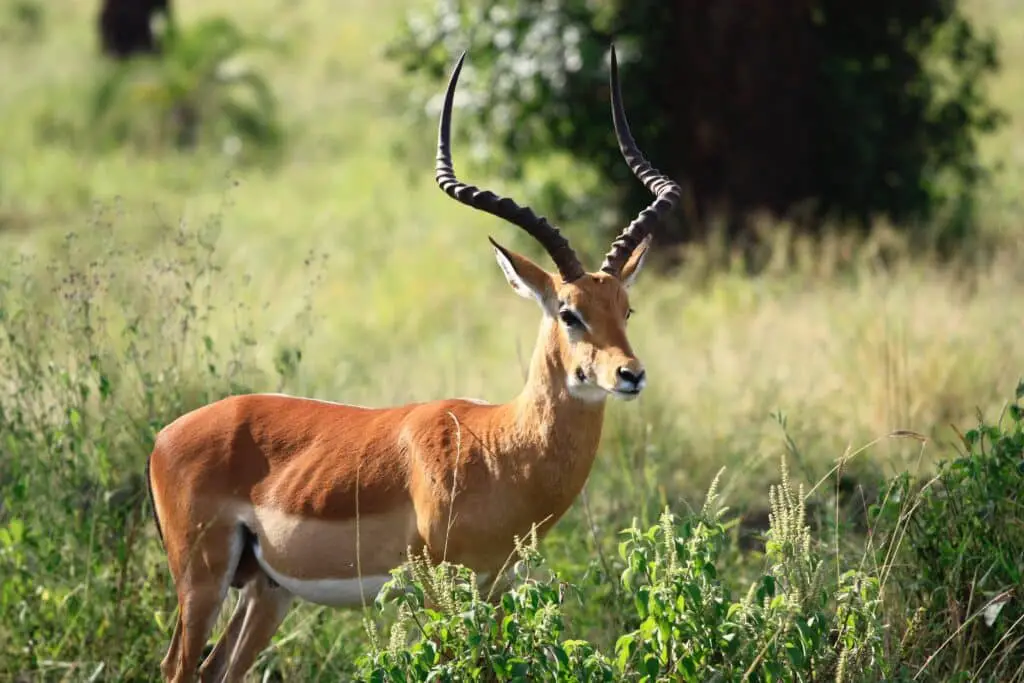
The gazelle’s stotting behavior also helps alert other gazelles in the herd that there is a predator nearby.
Because of its horns and slender limbs, a gazelle can sometimes be confused for a deer. Additionally, some gazelle species have the same coat color as some deer types.
However, there are many differences between a gazelle and a deer. In this article, we will provide information on the characteristics and behavior of a gazelle. Likewise, we will discuss the key differences between a deer and a gazelle.
Check out our full deer vs gazelle comparison, along with fun and interesting facts that you might be surprised to know about gazelles.
Key Differences Between Deer and Gazelle
Table of Contents
Toggle- Deer belong to the Cervidae family of animals. On the other hand, gazelles are members of the Bovidae family, which also includes yaks, goats, sheep, and buffaloes.
- One of the main differences between a gazelle and a deer is their horn vs antler structure. While the antlers of deer frequently branch out, the horns of gazelles grow upward and contain rings.
- In contrast to gazelles, which have horns that are permanently attached to their heads, deer shed and grow new antlers every year.
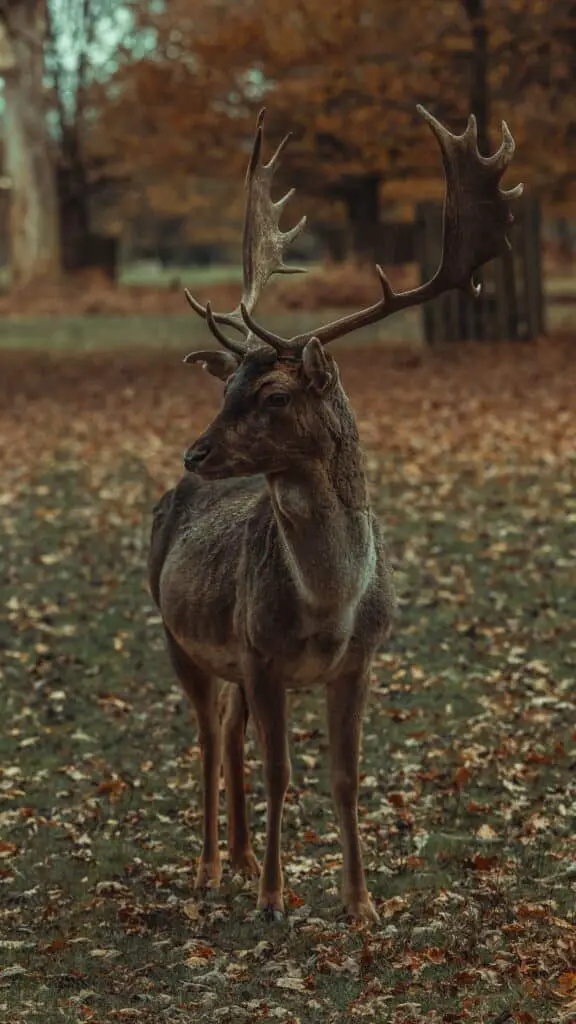
Cervidae vs Bovidae
The Cervidae family includes many other deer species including the elk, moose, and reindeer. Animals in the Cervidae family have hooves for toes.
They are also classified as ruminants or animals with four chambered stomachs. Cervids are further classified into two subfamilies, namely the Cervinae (Old World Deer) and Capreolinae (New World Deer).
The distinction originally arose from the environment in which the deer originated. However, the deer’s foot structure is now the basis of the distinction.
Old World Deer are called Plesiometacarpalian deer because they retained only the proximal parts of the second and fifth fingers of the metacarpal bones.
On the other hand, New World deer or Telemetacarpal deer retained the distal parts of their lateral metacarpal bones.
Animals belonging to the Bovidae family, just like Cervidae animals, are also hooved and have stomachs with four compartments. Considered as one of the most diverse families of mammals, the Bovidae family includes about 143 species.
Deer vs Gazelle Comparison (Physical Characteristics)
The main differences between a white-tailed deer and a Thomson’s gazelle are shown in the table below. Given that these two species are the most abundant, this comparison highlights the physical differences between the adult males of the two species.
| White Tailed Deer | Thomson’s Gazelle |
|---|---|
| 2.5 to 3.5 feet tall | 1.75 to 2.5 feet tall |
| 50 to 400 pounds | 33 to 77 pounds |
| Antlers up to 15 inches | Horns 9.5 to 17 inches |
| Coloration varies (reddish brown in summer and grayish brown in winter); coat lining the belly, throat and mouth is white | Coloration is tan or light brown with dark stripe along the side and white patch underneath |
Deer vs Gazelle Size
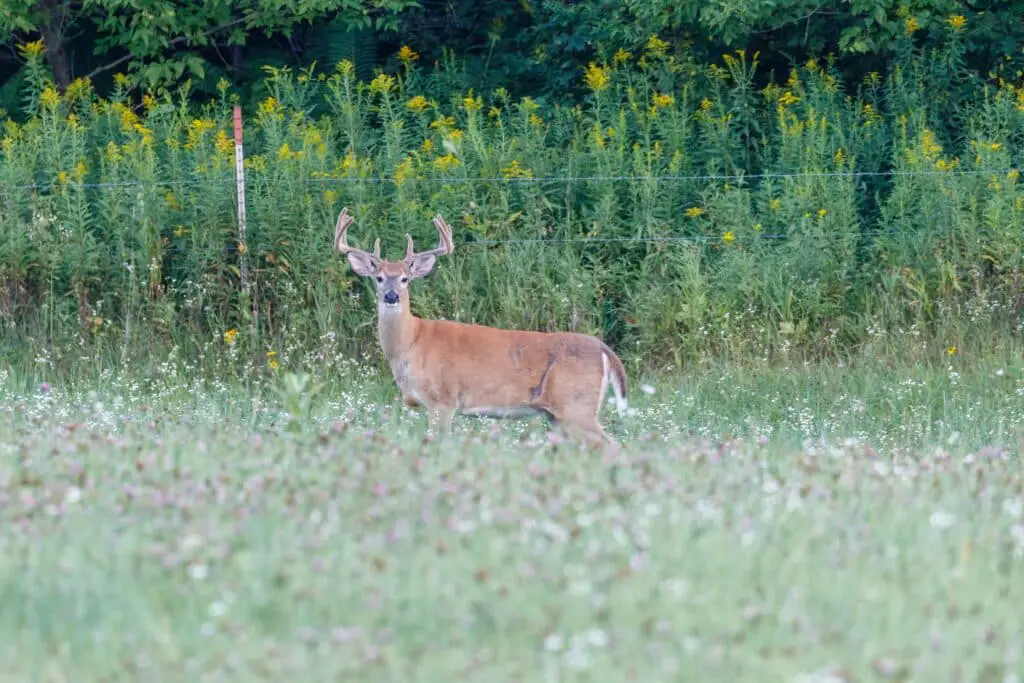
Depending on the species, deer come in a range of sizes. White-tailed deer adult bucks typically stand at a shoulder height of up to 3.5 feet. The pudu, the smallest species of deer, can weigh up to 13 pounds and stand up to 1.5 feet at shoulder height.
Larger deer species like the elk and moose can grow to be five and seven feet tall, respectively. Elks can weigh up to 1,200 pounds, and moose can grow over 1,800 pounds in weight.
Compared to deer, gazelles have a smaller built. The Speke’s gazelle, the smallest species of gazelle, can reach a height of only around two feet and can weigh of up to 44 pounds.
The Dama gazelle, the largest species of gazelle, can reach a height of four feet at the shoulder and weigh up to 190 pounds.
Deer Antlers vs Gazelle Horns
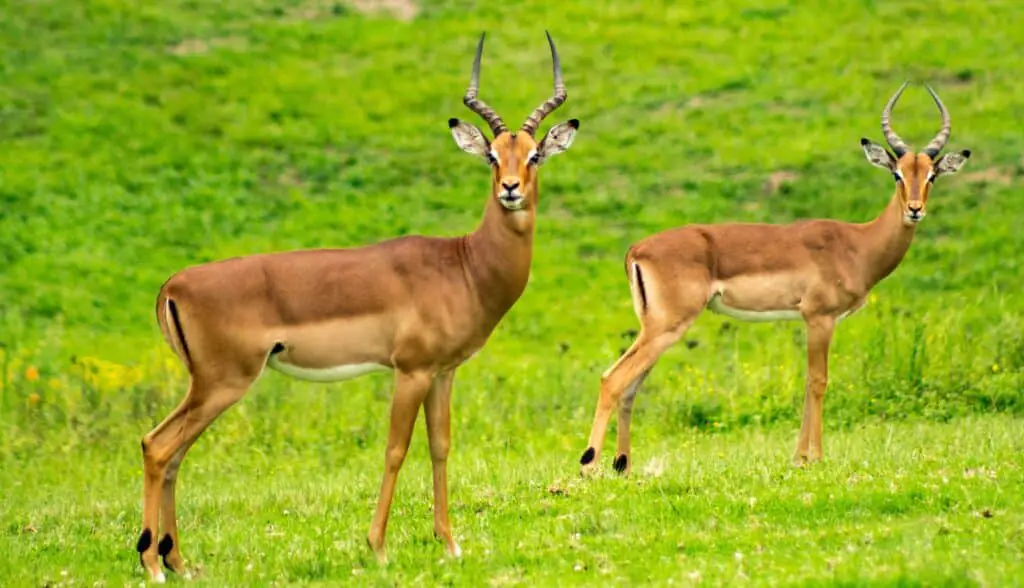
Deer antlers are deciduous, meaning, they molt each year. Antlers of male deer are made of bone and grow from the front skull. Either straight or curved, the antler could branch out in spikes.
In most deer species, only males grow antlers, except for the caribou (reindeer) deer wherein females also have antlers.
The horns of a gazelle also grow from the skull. But unlike deer antlers, they are permanently attached to the skull and are made of hardened keratin rather than bone. The gazelle’s horns point upward, are ringed, and usually have a velvety coat.
Deer vs Gazelle Coat Color
The majority of deer species have a reddish brown coat in the summer, which changes to a grayish brown hue as fall or winter approaches.
A genetic condition where their bodies overproduce melanin causes certain deer to have a black coat. In contrast, other deer species, like the piebald deer, have white patches on their coats due to the absence of melanin-producing cells.
Numerous gazelle species have a tan coat with a dark lateral stripe running down the side, a white rump, and a white underbelly. Their entire face is the same shade of tan, with a dark and light band extending from their eyes to the corner of their mouth.
Deer vs Gazelle Habitat and Distribution
Deer prefer living in the rainforest where there is an abundance of food and water sources. However, there are also deer species that live in arid regions like deserts and tundras.
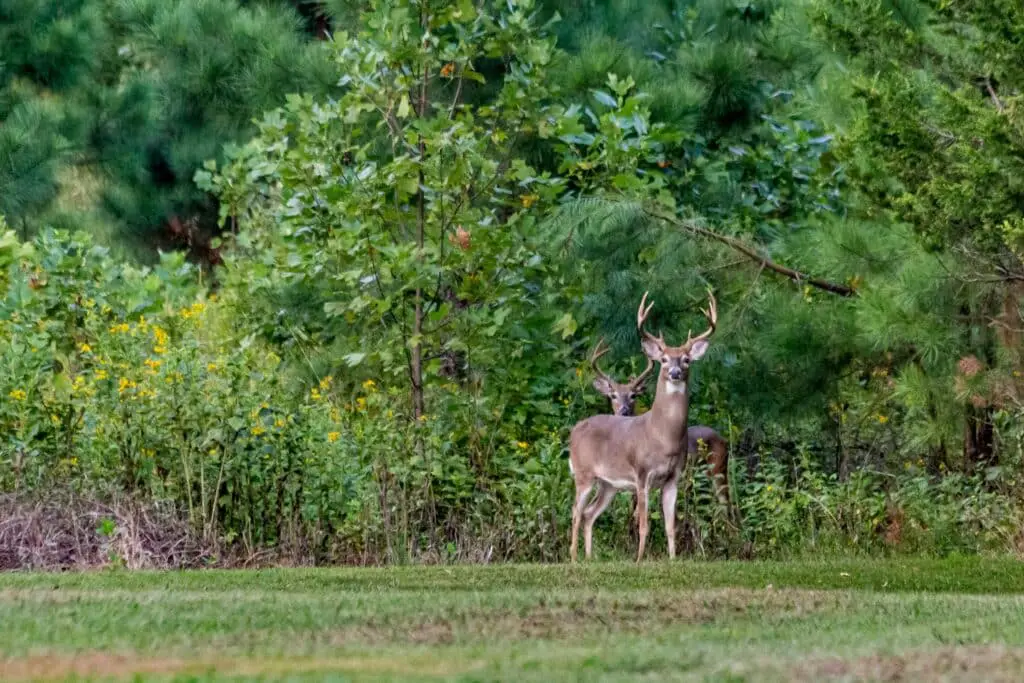
A few different species of deer can be found close to swamps or on steep slopes. Deer may be found all over the world and are native to all continents, with the exception of Antarctica, where the climate is too frigid and there aren’t many food sources.
Gazelles can thrivein harsh, desert-like conditions. In Africa, particularly in the Serengeti and Sahara Deserts, there are numerous species of gazelle. Additionally, gazelles are native to arid areas of Asia, the Middle East, and India.
The Cuvier’s gazelle, also known as the Edmi gazelle, may be found dwelling in the highlands and only migrates to milder climates in the winter.
Deer vs Gazelle Behavior and Social Patterns
As crepuscular animals, deer are active during twilight hours and before sunrise. The primary reason deer activity is high during these times is to avoid predators. As there is very little light during dusk or dawn, it is easier for deer to hide or escape from other animals.
Deer have unusually keen senses of smell and hearing, which aid in food gathering. These also enable them to detect the presence of predators. Deer would flee the area or seek cover if they felt they were in immediate danger.
The majority of male deer start the rut season in the fall, during which they become more aggressive in an effort to assert their dominance. The gestation period for deer is about 200 days and does or female deer typically give birth in Spring.
Deer communicate with other deer by producing sounds and gestures. They would snort or sniffle if they were frightened or anxious. Deer would also begin stamping their hooves to warn others in the herd if they are in danger.
A deer might grunt in anger to demonstrate power or claim possession of a particular area. They would also leave markings by rubbing their antlers into tree trunks or leaving urine and droppings to show ownership or establish dominance.
How Gazelle Compare
Many gazelle species, including the Speke’s gazelle, are crepuscular, just like deer. They are active after sunset and before sunrise and would mainly rest throughout the day.
Gazelles, thanks to their lean built and slender limbs, can run at high speeds to flee from predators. But before running away, gazelles would stot or pronk to warn the rest of the herd of the presence of a predator.
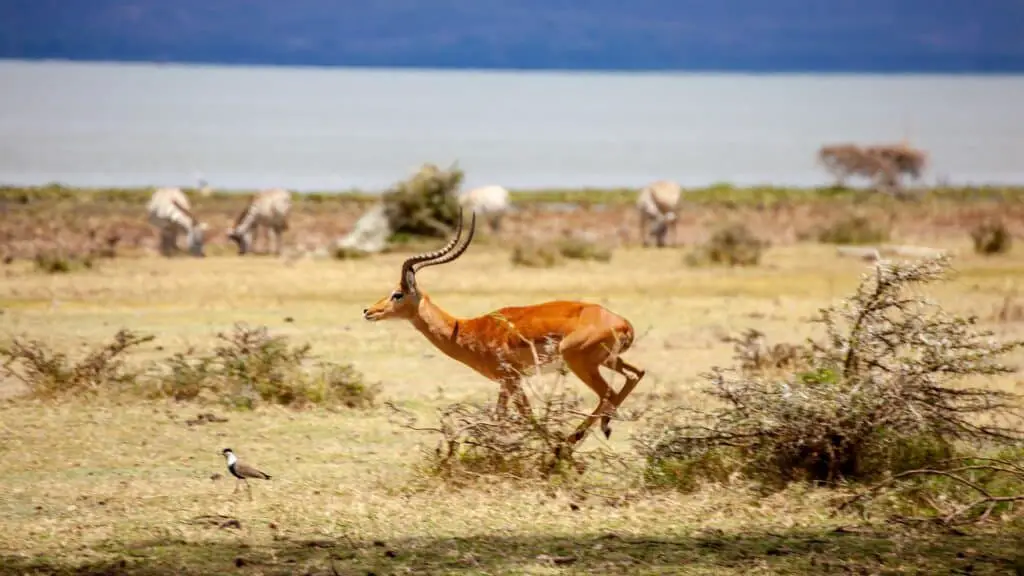
Similar to deer, gazelles mark their territory with urine and dung mounds and use their horns to demonstrate their authority. In order to establish dominance, gazelles would also engage in staring contests and make repeated gestures like exaggerated stances, displaying the side of their bodies, or scratching their head and neck.
Female gazelles often give birth between the months of May and July since the gazelle breeding season lasts from November to May. The availability of food and climatic conditions, however, might cause the mating season to shift.
Deer vs Gazelle Diet and Feeding Habits
Deer are herbivorous animals. They need to consume up to 8% of their body weight so they continuously search for food during the day. The main components of a deer’s diet include browse, forbs, mast, grass, and fungus.
Browse and forbs are the most important forages for supplying a deer’s nutritional requirements because they account for more than 80% of its diet year-round, with the exception of fall.
The leaves and buds of woody and semi-woody trees, such as oak, elm, maple, and dogwood, are called browse. Forbs, on the other hand, are the stems, leaves, and flowers of semi-woody plants including wild lettuce, violets, sunflowers, and asters.
Mast is also highly valued and consumption of mast rises from 11% in the summer (mostly soft mast, like berries, apples, and persimmons) to 28% in the fall (mainly hard mast, like acorns, pecans, and chestnuts).
A deer’s diet consists of agricultural plants such alfalfa, peanuts, corn, and clover. Deer also consume grass including bluegrass, wheat, and oats.
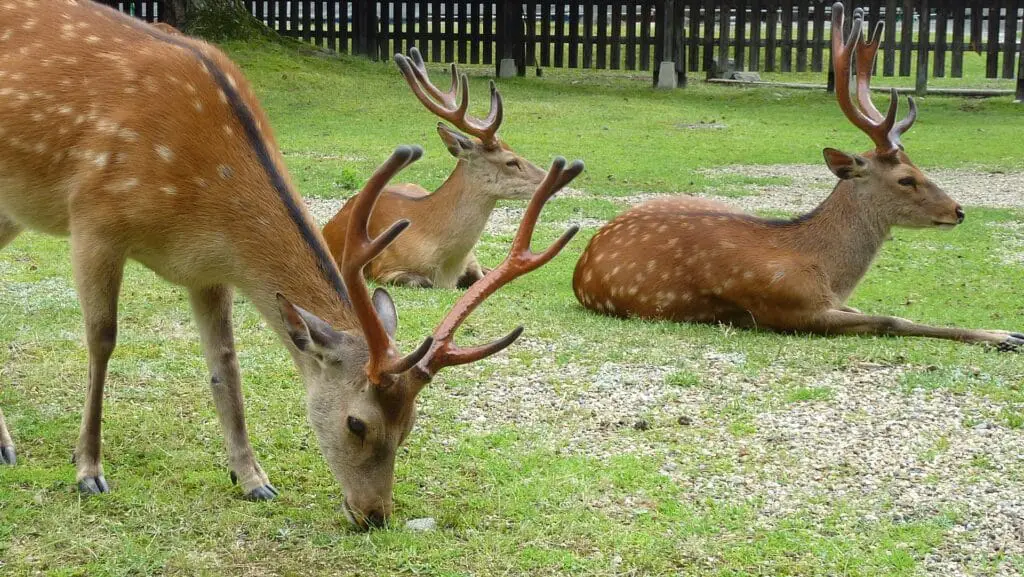
Additionally, they consume lichens and fungi, low-growing plants like moss and mushrooms that grow on rocks or trees.
Deer and gazelles are both herbivores. But because they are smaller than deer, gazelles are grazers by nature and receive the majority of their food from low-growing plants like grasses and shrubs.
Gazelles In the summer, gazelles would perch on trees to eat leaves and would stand on their hind legs to do so. They would also eat flora that has a higher water content.
The ability of gazelles to live without water is a distinct characteristic of their diet. The huge salivary glands on gazelles enable them to create a lot of fluids from the food they consume.
Deer vs Gazelle Speed and Agility
Both deer and gazelle are fast runners, allowing them to avoid predators such as bears, wolves, coyotes, and mountain lions. However, gazelles can run faster than deer. Even lions and kangaroos can’t keep up with gazelles as they run.
Numerous deer species have top speeds exceeding 30 mph. The fastest deer species (the Caribou), for instance, has a top speed of 50 mph. Deer would typically run quickly if they were escaping from predators. Additionally, deer run in a zigzag style to throw off their predators.
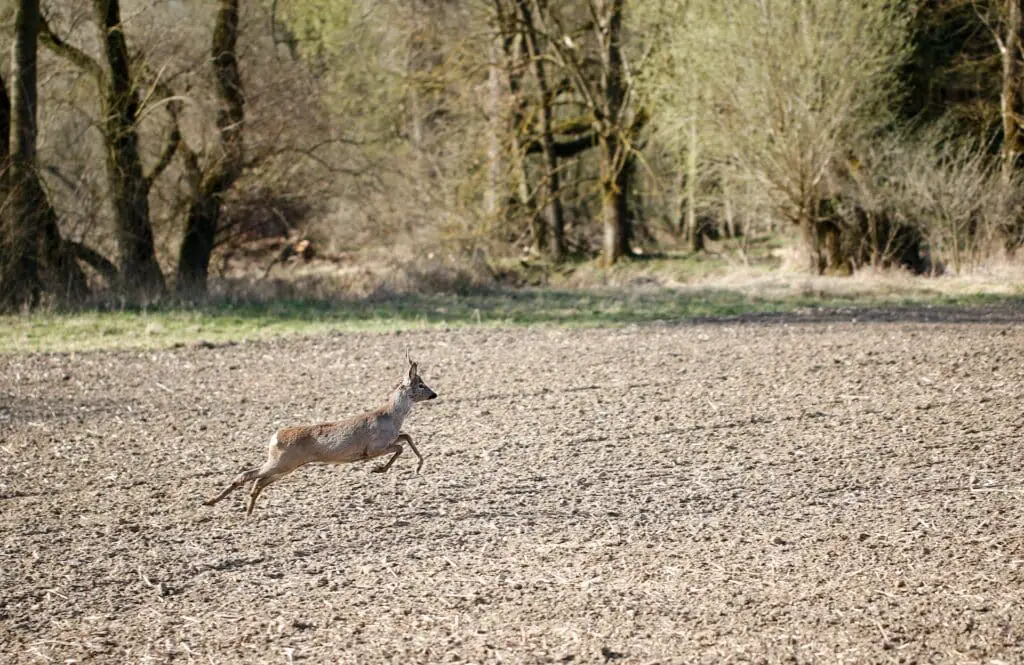
The Thomson’s gazelle can run at a top speed of 50 mph, while other gazelle species can reach up to 60 mph. The strong muscles on the rump and hind legs help gazelles move forward when they run, which is why they can sprint so quickly.
While gazelles may not be as quick as cheetahs, it is possible for gazelles to outrun them. Gazelles have the ability to change directions quickly, allowing them to outmaneuver and elude their prey.
Just like deer do, gazelles defend themselves by running in a zigzag pattern.
Deer vs Gazelle Conservation Status
One of the most prevalent deer species in the world, white-tailed deer are mostly found in the United States. Deer species that are on the verge of extinction do exist, nevertheless.
For instance, there are about 2,400 milu or elaphure deer, sometimes known as Pere David’s deer, which are present in China. The Bawean deer in Indonesia and the giant muntjac found in Cambodia and Vietnam are two other deer species that have been classified as critically endangered.
With a population of about 550,000, Thomson’s gazelle is the most abundant species of gazelle. The Thomson gazelle’s conservation status is considered to be near threatened due to its declining population.
On the other hand, some gazelle species have been classified as critically endangered, like the Dama gazelle, whose population in the wild is now only comprised of less than 300 mature individuals.
Loss of habitat, climate change, and overhunting are some of the causes of the declining numbers of both deer and gazelle species.
Fortunately, many countries including the United States, China, and Morrocco as well as European nations are implementing captive breeding programs in order to help the endangered deer and gazelle species to survive.
Final Thoughts On This Comparison
Deer and gazelles may look similar but there are tell-tale differences that can easily help you distinguish one from the other. Antlers on deer are more prominent because they spread out in spikes and grow wider. The horns of gazelles, however, are ringed and grow upward rather than outward.
If you’re observing these animals in the wild, one of the behaviors that you can look out for is how they react to stimuli. If the animal jumps up from the ground on all four limbs before running away, then it’s most likely a gazelle.
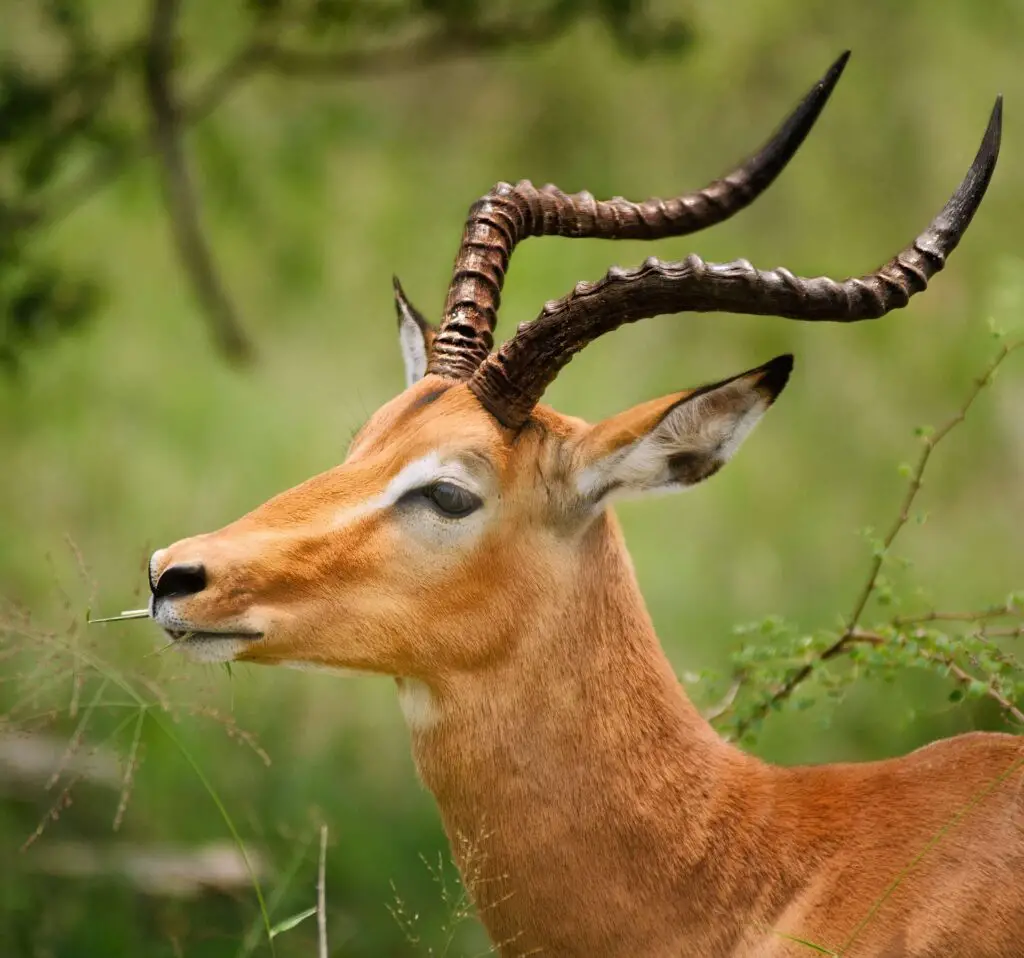
They provide food for other wild creatures who hunt them as prey. As foragers, they help prevent the dominance of one plant species, which balances the expansion of different vegetation.

